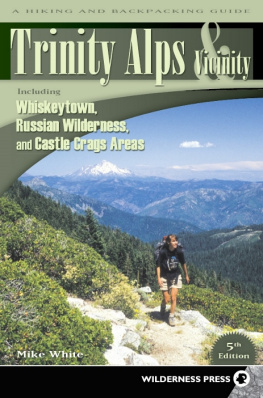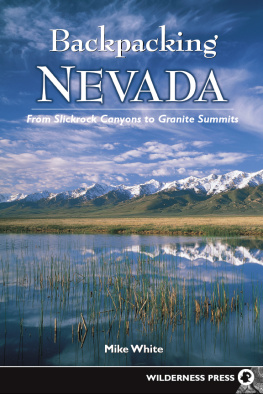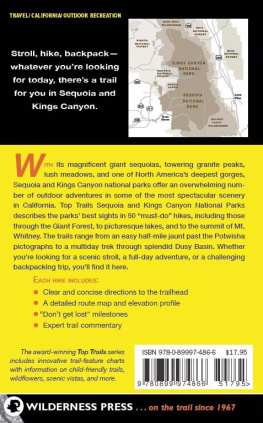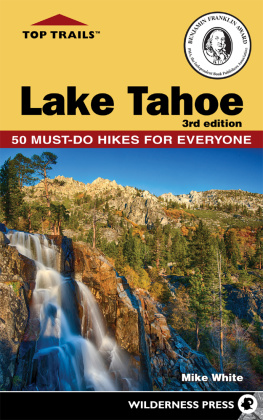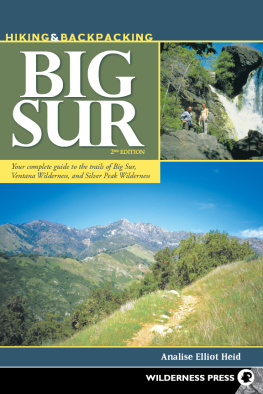
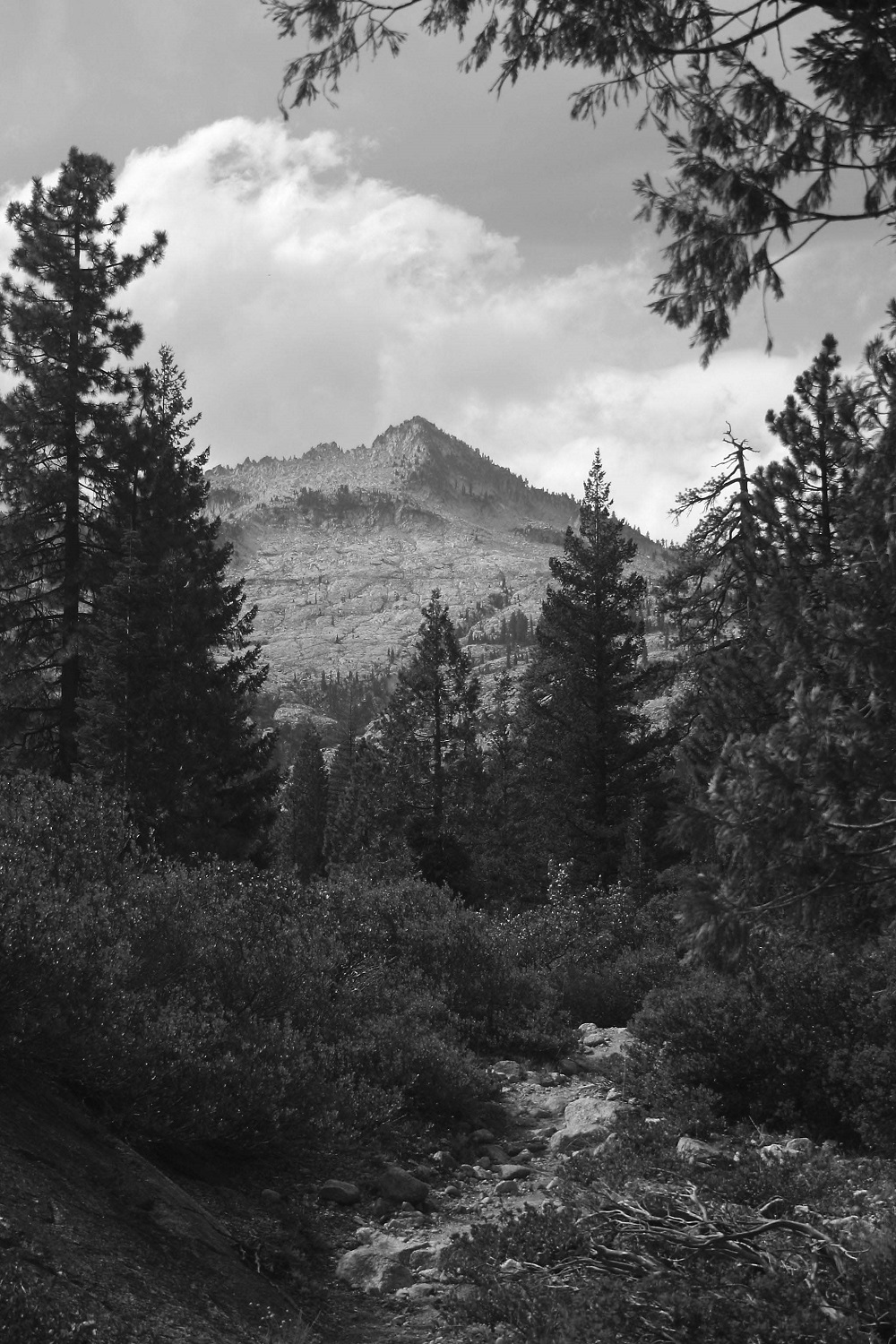

Trinity Alps and Vicinity: A Hiking and Backpacking Guide
Including Whiskeytown, Russian Wilderness, and Castle Crags Areas
1st EDITION 1983
2nd EDITION 1986
3rd EDITION 1994
4th EDITION 2004
5th EDITION 2010
Copyright 1994, 2004, 2010 by Mike White
Front cover photo copyright 2010 by Martin Beebee/ Alamy
Interior photos by author and Luther Linkhart
Maps: Mike White
Cover design: Scott McGrew
Book design and layout: Larry B. Van Dyke
Book editor: Laura Shauger
ISBN 978-0-89997-501-6
Manufactured in the United States of America
| Published by: | Wilderness Press |
| 1345 8th Street |
| Berkeley, CA 94710 |
| (800) 443-7227; FAX (510) 558-1696 |
| info@wildernesspress.com |
| www.wildernesspress.com |
Visit our website for a complete listing of our books and for ordering information.
| Cover photo: | Trinity Alps Wilderness with Mt. Shasta in the background |
| Frontispiece: | Mt. Hilton from Boulder Scramble Trail () |
All rights reserved. No part of this book may be reproduced in any form, or by any means electronic, mechanical, recording, or otherwise, without written permission from the publisher, except for brief quotations used in reviews.
SAFETY NOTICE: Although Wilderness Press and the author have made every attempt to ensure that the information in this book is accurate at press time, they are not responsible for any loss, damage, injury, or inconvenience that may occur to anyone while using this book. You are responsible for your own safety and health. The fact that an activity or a trail is described in this book does not mean that it will be safe for you. Be aware that trail conditions can change from day to day. Always check local conditions, know your own limitations, and consult a map.
To the memory of Luther Linkhart, who was the Trinity Alps first and foremost author, and who provided me with a great foundation upon which to begin my writing career

Acknowledgments
As for all my book projects, support and encouragement from my wife, Robin, is absolutely essentialall my efforts would be fruitless without her help. I would also like to thank those friends who joined me on the trail for the updates during the 2008 season: Keith Catlin, Tic Long, and Bob Redding. Roslyn Bullas has always provided invaluable oversight for all of my projects for Wilderness Press, and Laura Shauger proved once again to be an excellent editor.
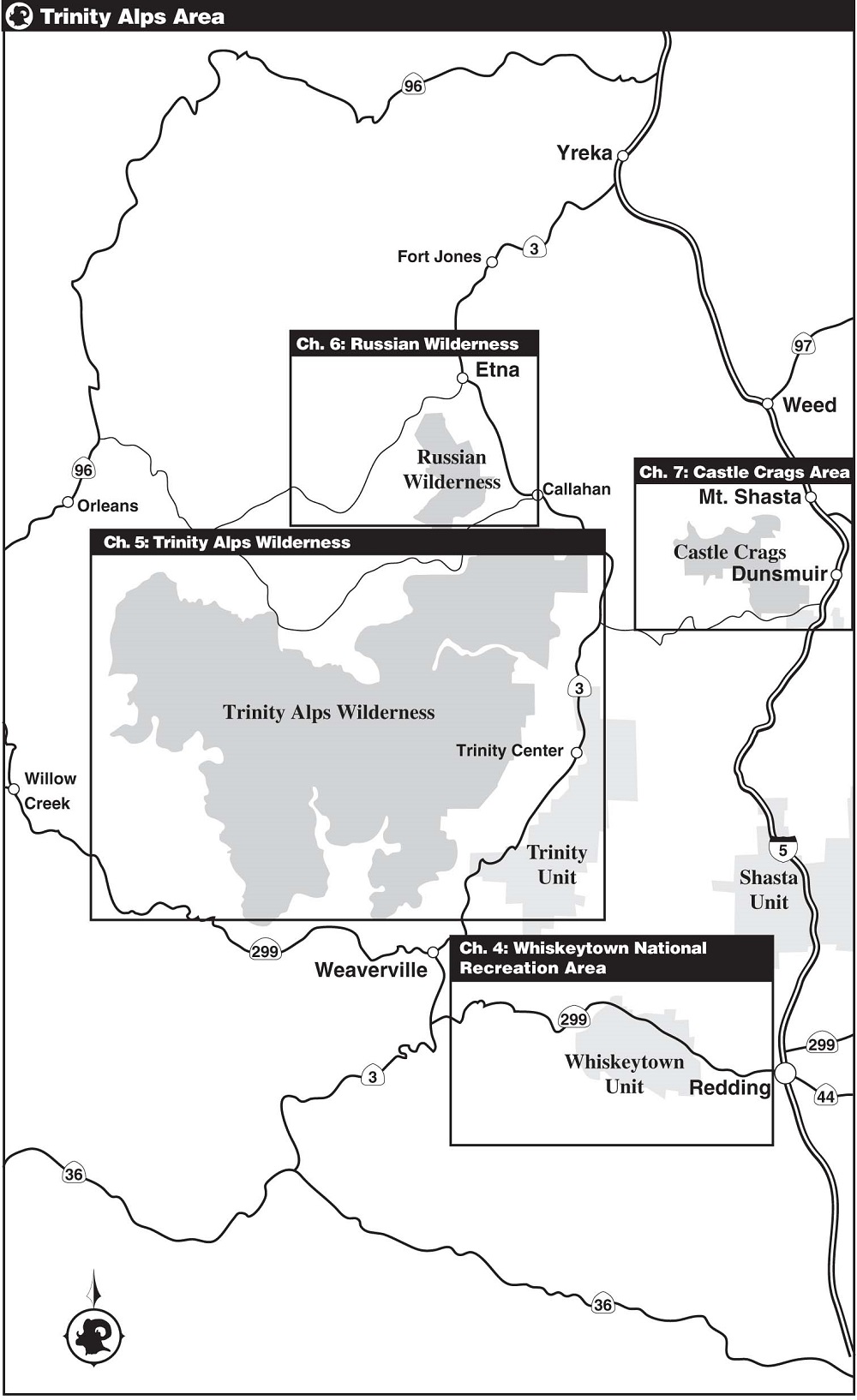
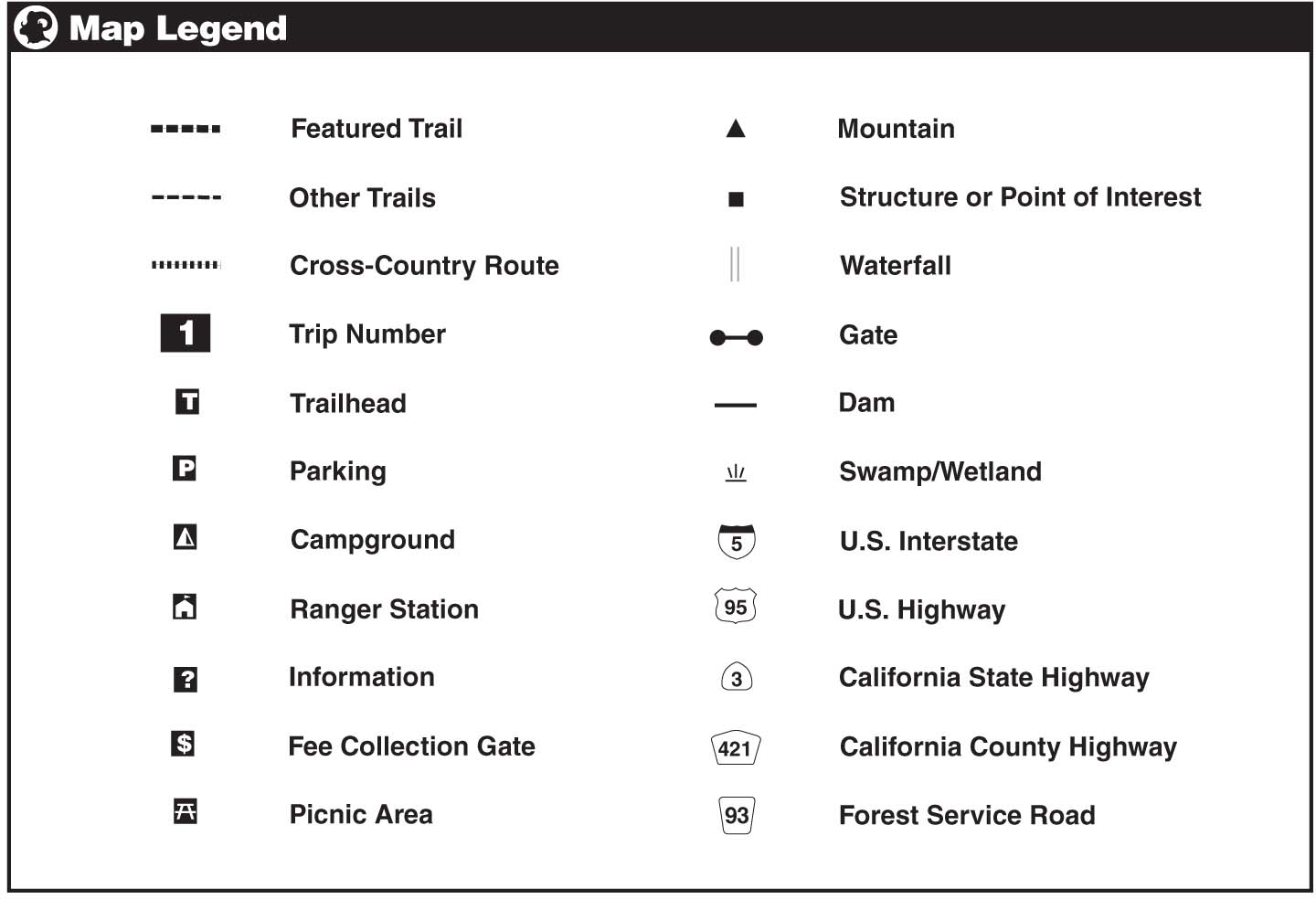
Preface to the Fifth Edition
On June 21, 2008, a flurry of lightning strikes swept across California in a nearly unprecedented fashion. In and around the Trinity Alps, several small fires started by those strikes merged and grew into devastating forest fires combined under the names of the Alps, Lime, and Iron complexes. These fires burned for several weeks ultimately laying claim to a total of nearly 170,000 acres burned. Along with the forest destruction and an eventual cost of nearly 150 million dollars to fight, the Trinity Alps fires decimated the usually bustling summer recreation and tourism season. Throughout most of July, the town of Weaverville resembled an apocalyptic war zone rather than the usual tourist hamlet of the region. Even greater losses occurred in the toll of human lives, as a helicopter crash on August 7 killed seven Oregon firefighters, the pilot, and a U.S. Forest Service employee (four others were seriously injured but survived). Another firefighter died of injuries sustained while working on the Iron Complex in late July.
These fires resulted in vastly diminished opportunities to gather updated field information on many of the trails in the Trinity Alps. While I successfully hiked all of the new trails included in this guide within the Whiskeytown, Russian Wilderness, and Castle Crags areas in 2008, I was unable to complete fieldwork for many of the trails in the Alps directly because of the fires and indirectly because of the resulting poor air quality from smoky skies. In addition, inadequate funding has kept the Forest Service from performing necessary maintenance on some of the lesser-used trails in the Alps, particularly in the western half. Many of the trails within the New River watershed have not been maintained for years and are now considered unmaintained trails. Consequently, hikers should be prepared for less-than-perfect conditions in some areas and should check with the Forest Service about the current status of trails before embarking on any of these trips, especially in the western part of the Trinity Alps. Because of the absolute necessity of dedicating government personnel to the fighting of the 2008 fires, information on the conditions of the trails I was unable to hike was almost impossible to obtain. However, most of the trails in the eastern half of the Trinity Alps Wilderness should present little, if any, problems for hikers, backpackers, or equestrians.
The greater Trinity Alps region remains one of my all-time favorite hiking areas, as the diversity of terrain, vegetation, and wildlife is difficult to match just about anywhere else in the West. The significant distance from any major metropolitan center ensures that devotees wont overrun the area in the near future, providing a wealth of opportunities for achieving solitude and serenity. These attributes and many more make the area well deserving of your time and interest.
Summary of Trips
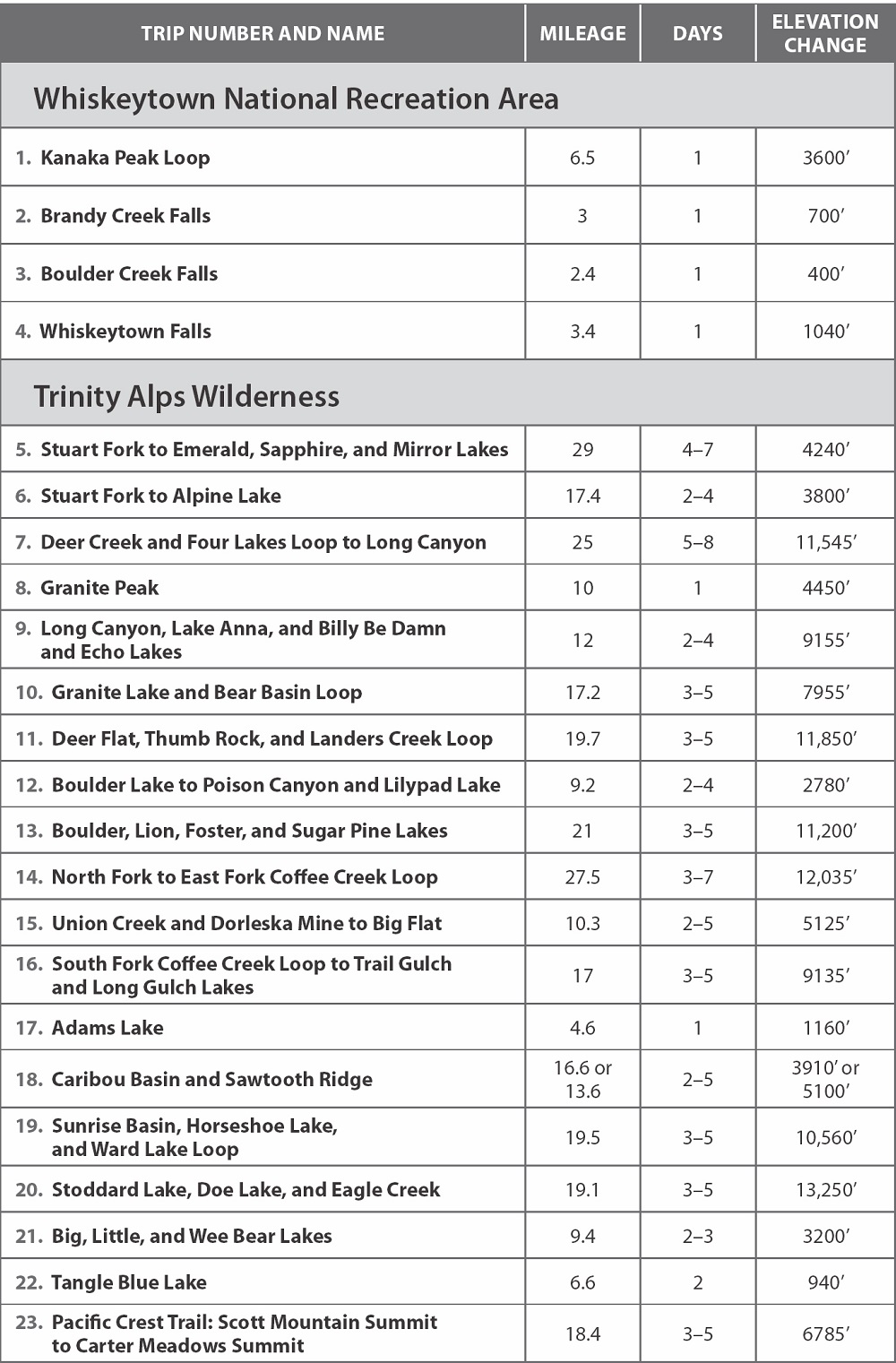

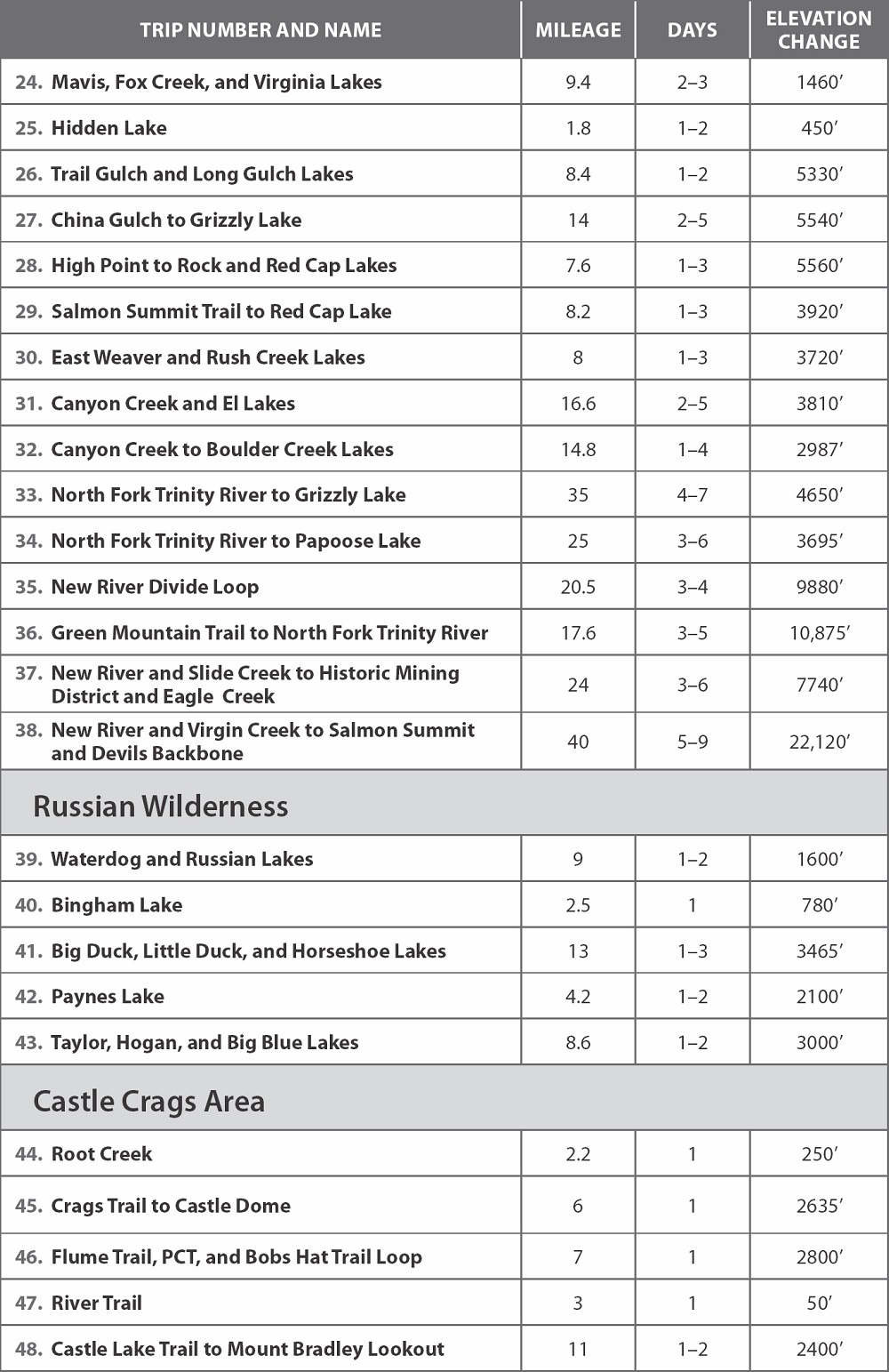

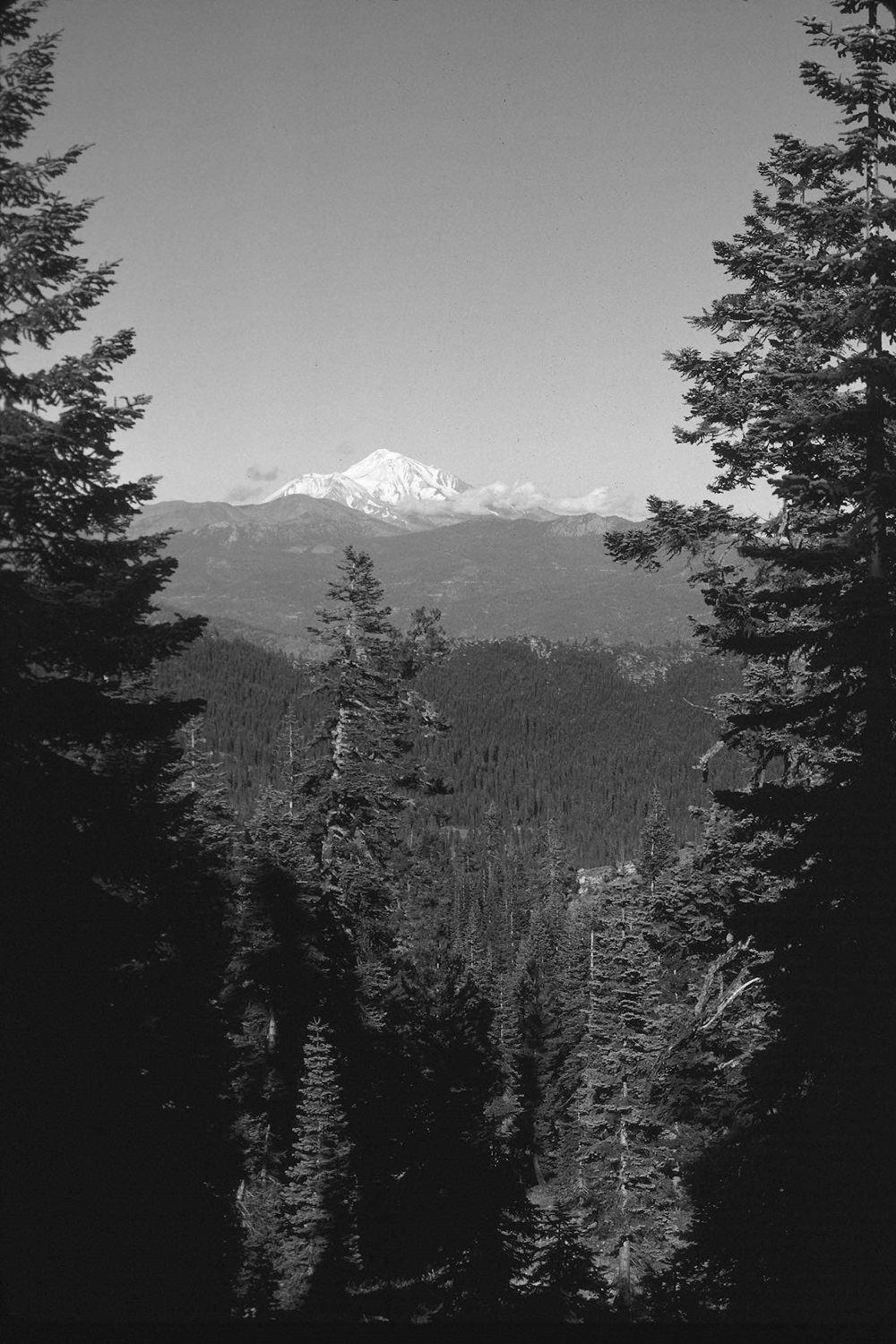
Mt. Shasta from Eagle Divide
CHAPTER 1
Introduction to the Area
I magine for a moment that youre driving north on Interstate 5 south of Redding, California, on a glorious spring day, after a north wind has cleared the air above the upper Sacramento River Valleya day when you can see for a distance of more than 100 miles. As the freeway crests a ridge, the frosted cone of Mt. Shasta directly north suddenly enthralls you and your passengers, the majestic peak towering into the sky above the surrounding lowlands. Over to the northwest, a row of snow-capped peaks above the lower ridges behind Redding intrigues you. Most of your riders may be surprised to see snowy mountains toward the Northern California coast, but a few in the know may recognize the Trinity Alps, and soon regale the group with interesting accounts of past experiences in one of the states most diverse mountain ranges. With the possible exception of fishing stories, they are probably telling the truth.
Next page
